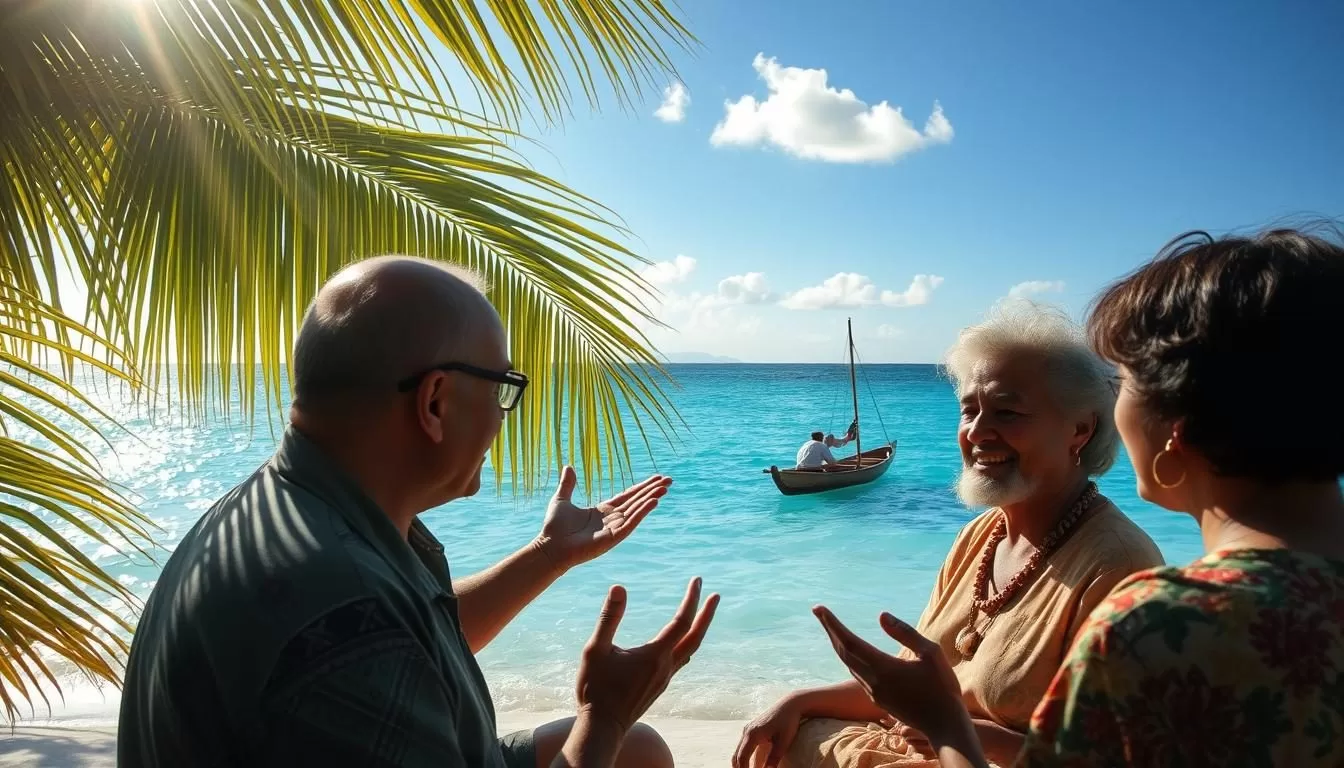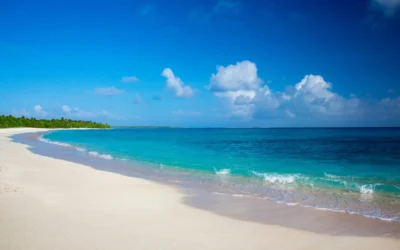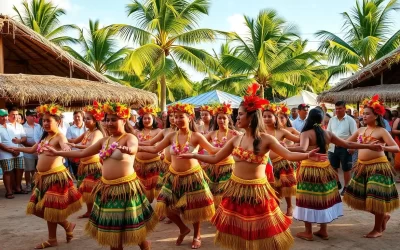✓ Accommodations✓ Flights✓ Rental Cars
When you think of the Marshall Islands, what comes to mind? For many, it’s the stunning atolls and vibrant culture. But did you know that the language spoken here is just as unique? Marshallese, also known as Kajin Ṃajeḷ, is the official language of this Pacific country and is spoken by nearly everyone.
Marshallese isn’t just a way to communicate—it’s a key part of national identity. With two major dialects, Rālik and Ratak, it reflects the rich history of the Marshall Islands. Whether you’re exploring the capital or a remote atoll, you’ll hear this language everywhere.
Interestingly, many Marshallese speakers also live in the United States, keeping their linguistic heritage alive abroad. Understanding this language helps you appreciate the culture and people of this fascinating country.
Overview of the Marshall Islands
Nestled in the vast Pacific Ocean, the Republic of the Marshall Islands is a fascinating blend of natural beauty and rich history. This island nation is made up of 29 atolls and 5 main islands, creating a unique geography that spans over 1,000 islets. Its population of around 42,000 people largely resides in Majuro and Kwajalein, blending traditional lifestyles with modern influences.
Geographical and Demographic Context
The Marshall Islands is divided into two chains: the eastern Ratak and the western Rālik. These chains not only shape the landscape but also influence local dialects and community identities. Approximately 50% of the population lives on Majuro Atoll, making it the most densely populated area.
Life expectancy here is 64 years for men and 67 for women, reflecting the challenges and resilience of the people. The nation’s compact geography, with many atolls barely rising a meter above sea level, makes it both stunning and vulnerable.
Historical Background
The history of the Republic of the Marshall Islands is deeply intertwined with colonial influences. After gaining independence in 1979, the nation officially became the Republic of the Marshall Islands in 1982. Its relationship with the United States has been significant, especially through the Compact of Free Association, which came into force in 1986.
Nuclear testing between 1946 and 1958 left a lasting impact, but the people have shown remarkable strength in preserving their culture and identity. Today, the Marshall Islands continues to evolve, balancing tradition with modern global connections.
Introduction to the Marshallese Language
Have you ever wondered how a language can shape an entire community? The Marshallese language, known as Kajin Ṃajeḷ, is a perfect example. It’s not just a way to communicate—it’s a cornerstone of identity for the people of this Pacific nation.
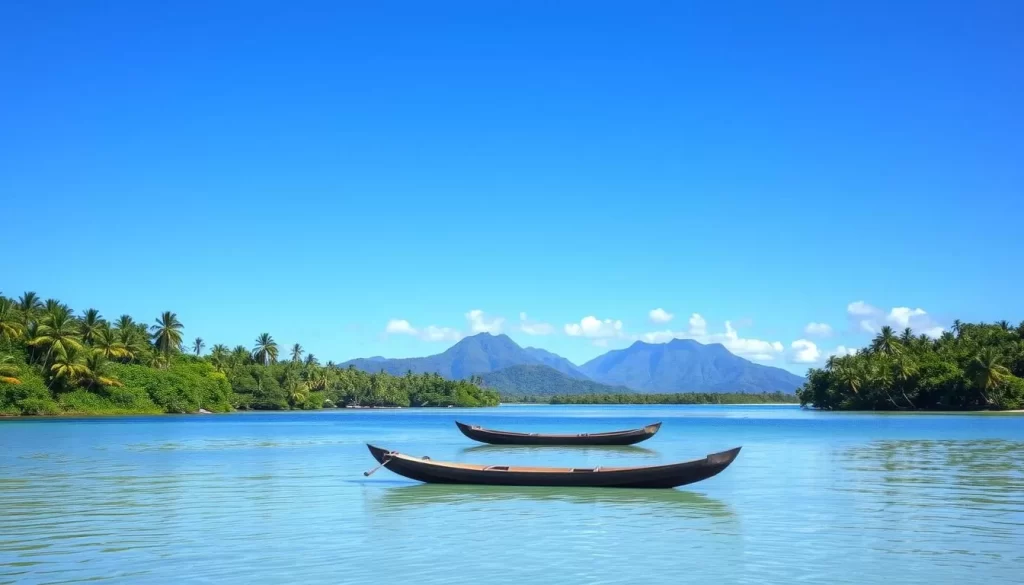
Language Origins and Evolution
Marshallese belongs to the Austronesian language family, sharing ties with other Micronesian and Oceanic languages. Over millennia, it has evolved through interactions with various cultures, including those from the United States and neighboring regions.
Today, nearly 100% of the population speaks Marshallese, making it a unifying force for the group. Its two major dialects, Rālik and Ratak, reflect the nation’s geographical and cultural diversity.
Cultural Significance for the Marshallese People
For the Marshallese, their language is more than words—it’s a living connection to their heritage. It serves as a marker of individual and communal identity, preserving traditions in a rapidly changing world.
Even among those living in the United States, Marshallese remains a vital link to their roots. This cultural transmission ensures that the language continues to thrive, bridging past and present.
English and Its Role in the Islands
English has become a vital part of life in this Pacific nation, shaping education, governance, and global connections. Introduced by U.S. Protestant missionaries and colonial administrators, it has grown into a secondary yet significant language.
Today, English plays a pivotal role in schools, government offices, and international communication. Many children and adults are exposed to it, fostering bilingualism and greater global connectivity.
The influence of missionaries and early colonial administrators is undeniable. They integrated English into daily life, creating a linguistic bridge between cultures. This historical contact has left a lasting impact on language education and usage.
“Language is the road map of a culture. It tells you where its people come from and where they are going.”
While English is not the primary language, its role is essential. It supports modern communication and helps the nation connect with the wider world. This dual-language system reflects the resilience and adaptability of the people.
| Language | Primary Use | Percentage of Speakers |
|---|---|---|
| Marshallese | Daily Communication | 95% |
| English | Education, Government | 80% |
This linguistic duality is a testament to the nation’s ability to balance tradition with modernity. It ensures that while the local culture thrives, the people remain connected to the global community.
Marshall Islands: Official and widely spoken languages
The evolution of the Marshallese writing system reflects a fascinating journey of cultural preservation and modernization. From the old orthography (Kajin Majōl) to the new orthography (Kajin Ṃajeḷ), this transition has shaped how the language is written and understood today.
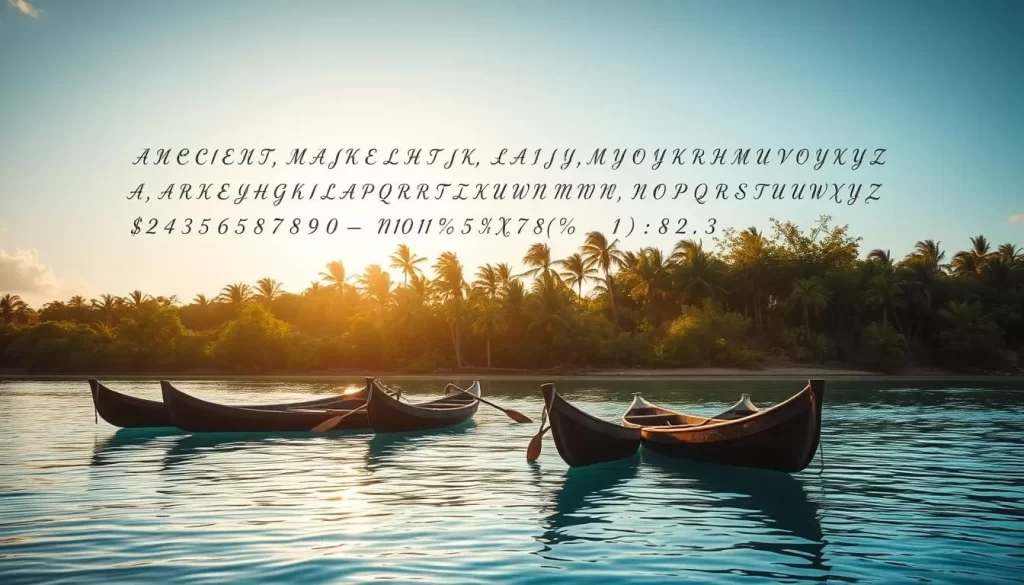
The old orthography was rooted in early linguistic efforts to document the language. It used a Latin-based alphabet but lacked standardization, leading to inconsistencies in spelling and pronunciation. Over time, educational and government reforms introduced the new orthography, which streamlined the writing system and made it more accessible.
Key differences between the two systems include the representation of sounds and the use of diacritical marks. The new orthography emphasizes clarity and consistency, ensuring that written Marshallese aligns more closely with its spoken form.
“Language reform is not just about changing letters—it’s about preserving identity while embracing progress.”
This transition was influenced by the nation’s connection with the United States, where educational materials and linguistic research played a significant role. Today, the new orthography is widely used in schools, media, and official documents, reinforcing the language’s role in national identity.
| Orthography | Key Features | Usage |
|---|---|---|
| Old Orthography | Latin-based, inconsistent spelling | Historical documents |
| New Orthography | Standardized, diacritical marks | Education, media, government |
Understanding these changes helps you appreciate the complexity of language reform and its impact on cultural preservation. The Marshallese writing system continues to evolve, bridging the past and the future.
Understanding Marshallese Language Dialects
Exploring the dialects of Marshallese reveals a rich tapestry of cultural and geographic influences. The Ratak and Rālik chains, which divide the nation, host distinct linguistic variations. These dialects reflect the unique identities of their respective regions.
One key difference lies in how double consonants are resolved. In the Rālik dialect, sounds are often softened, while Ratak speakers tend to emphasize them. This subtle distinction highlights the free association of sounds in each variety.
Rālik and Ratak Variations
Phonetic and lexical differences between the two dialects are fascinating. For example, certain words in Rālik may have entirely different pronunciations in Ratak. These variations are deeply tied to the cultural and geographic diversity of the archipelago.
Demographic patterns also play a role. Over two-thirds of the population resides in Majuro and Ebeye, where Ratak is more prevalent. In contrast, Rālik dominates the western atolls, reflecting the influence of regional identities.
| Dialect | Key Features | Primary Regions |
|---|---|---|
| Rālik | Softer consonant sounds | Western atolls |
| Ratak | Emphasized consonants | Eastern atolls |
Understanding these dialects helps you appreciate the layered complexities of language use in this Pacific nation. It also connects local speech to broader regional identities, such as those in the federated states micronesia.
Linguistic Classification and Origins
The linguistic roots of Marshallese offer a fascinating glimpse into its global connections. This language is classified within the Eastern Oceanic subgroup of the Austronesian family, sharing ties with other Micronesian languages like Gilbertese and Chuukese. Its classification highlights its regional significance and deep historical ties.

Austronesian Roots
Marshallese belongs to the Austronesian family, one of the largest and most widely dispersed language groups in the world. This family includes over 1,200 languages spoken across the Pacific, Southeast Asia, and parts of East Africa. The Austronesian connection underscores the shared heritage of many Pacific cultures.
Historical migration patterns played a key role in shaping these linguistic relationships. Early settlers brought their languages to new lands, creating a web of interconnected dialects and tongues. Marshallese, as part of this network, reflects centuries of cultural exchange.
Micronesian Relatives and Connections
Within the Micronesian region, Marshallese shares similarities with languages like Gilbertese and Chuukese. These connections are evident in vocabulary, grammar, and phonetic structures. Such parallels highlight the close-knit nature of Micronesian cultures.
- Shared Vocabulary: Many words in Marshallese have counterparts in related languages.
- Phonetic Patterns: Similar sound systems link these languages across the region.
- Cultural Exchange: Historical interactions have enriched linguistic development.
The influence of the United States and other external forces has also shaped Marshallese over time. Despite these changes, the language remains a vital part of local identity and heritage.
Phonological Features of Marshallese
The sound system of Marshallese is a fascinating blend of complexity and uniqueness. Its phonological structure sets it apart from many other languages, especially those in the federated states of Micronesia. Let’s dive into what makes this language so distinctive.
Consonant Inventory
Marshallese boasts a large consonant inventory, with 22 distinct phonemes. What makes it even more intriguing is the presence of secondary articulations like velarization, labialization, and palatalization. These features add layers of complexity to pronunciation.
For example, consonants can be classified as “light” or “heavy,” depending on their articulation. Light consonants are softer, while heavy ones are more emphasized. This distinction plays a crucial role in how words are spoken and understood.
Vowel System
The vowel system in Marshallese is equally unique. It features four primary vowel phonemes, each with multiple allophones. This means that a single vowel can have different sounds depending on its context.
One of the most striking aspects is the vertical vowel system, where vowel height is more significant than frontness or backness. This creates a distinct sound that is immediately recognizable to native speakers.
“The phonological features of Marshallese are not just sounds—they are a reflection of its cultural identity.”
These features make Marshallese a challenging yet rewarding language to learn. Its phonological richness is a testament to the resilience and creativity of its speakers.
| Feature | Description | Example |
|---|---|---|
| Consonants | 22 phonemes with secondary articulations | Light vs. heavy consonants |
| Vowels | 4 primary phonemes with multiple allophones | Vertical vowel system |
Understanding these phonological features helps you appreciate the depth of Marshallese. Whether you’re a student in school or a linguist, exploring this language offers a window into a rich cultural heritage.
Orthography and the Marshallese Writing System
The Marshallese writing system has undergone significant changes to better serve its speakers. Originally based on a Latin alphabet introduced by missionaries, it faced challenges in accurately representing the language’s sounds. This led to inconsistencies in spelling and pronunciation, making communication difficult.
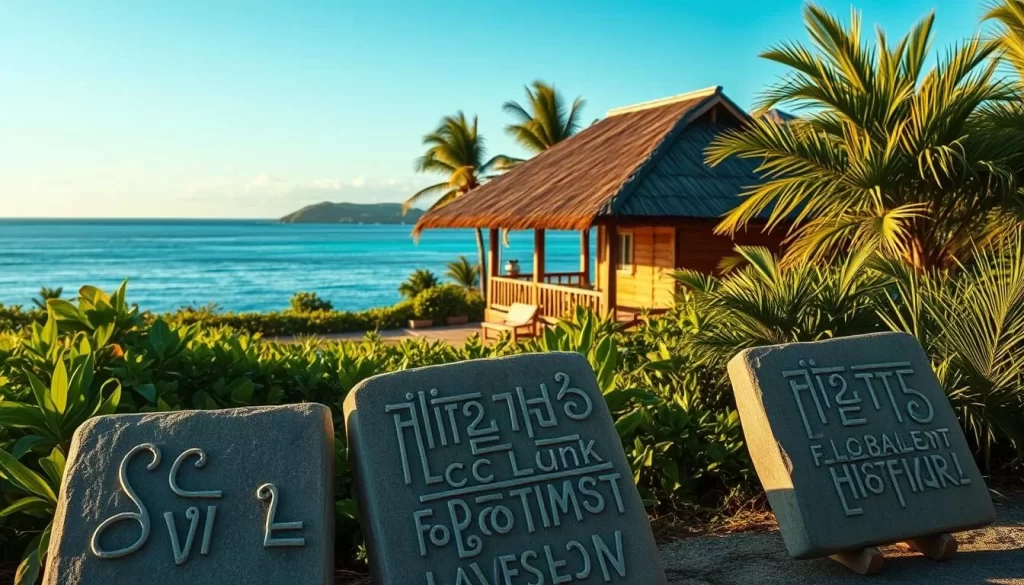
Latin-Based Alphabet and Reform
In 1994, the nation standardized its orthography to address these issues. The new system, based on the Marshallese-English Dictionary, introduced clearer letter representations and pronunciation guides. This reform was crucial for improving literacy and ensuring consistent communication in schools and government offices.
One of the key changes was the use of diacritical marks to distinguish specific sounds. This made the written language more reflective of its spoken form, helping learners and speakers alike. The reform also received support from international organizations, including the United States, which played a role in its development.
“Language reform is not just about changing letters—it’s about preserving identity while embracing progress.”
Today, the reformed writing system is widely used in education, media, and official documents. It has strengthened the state’s ability to preserve its cultural heritage while adapting to modern needs. For more insights into the Marshallese language, explore its unique features and challenges.
This transition highlights the importance of balancing tradition with innovation. By embracing these changes, the nation ensures that its language remains a vital part of its identity for generations to come.
Cultural Impact of Language on Community Identity
Language is the heartbeat of a community, shaping its identity and preserving its heritage. In the Ratak chain, Marshallese is more than a communication tool—it’s a living connection to cultural roots. From traditional storytelling to modern media, the language plays a vital role in maintaining community cohesion.
Tradition, Oral History, and Modern Expression
Oral histories are a cornerstone of Marshallese culture. Elders pass down stories through generations, keeping traditions alive. These narratives are not just tales; they are lessons in values, history, and identity.
Modern expression has adapted traditional language forms to new contexts. Media, technology, and education now use Marshallese to bridge the past and present. This ensures that the language remains relevant in a rapidly changing world.
“Language is the soul of a people. It carries their history, their struggles, and their dreams.”
The heritage of the Ratak chain is maintained through language. Regional identifiers, like dialects, reflect the unique identities of their communities. This linguistic diversity strengthens cultural pride and unity.
For more insights into how language shapes identity, explore the study on Mapping the Linguistic Landscapes of the Marshall. It highlights the interplay between language use and community identity, offering a deeper understanding of this cultural phenomenon.
Language Revitalization and Preservation Efforts
Preserving a language is more than just words—it’s about safeguarding a culture’s soul. In the islands marshallese, efforts to revitalize the native tongue are vital for maintaining cultural identity. Educational programs and community projects play a key role in keeping the language alive.
One of the most effective strategies is the Language Apprentice model. Here, fluent elders teach young adults, ensuring the language is passed down through generations. This approach has been successful in other areas, proving its value in language preservation.
Community workshops also contribute significantly. These gatherings focus on teaching the language in everyday contexts, making it relevant in modern life. Schools have adopted immersion techniques, ensuring students learn the language in a natural and engaging way.
“Language is the road map of a culture. It tells you where its people come from and where they are going.”
Partnerships with the united states and international agencies have provided crucial support. Funding and resources have been directed towards these initiatives, ensuring their success. This collaboration highlights the global importance of preserving linguistic diversity.
In one notable effort, the Language Nests program was introduced. This initiative, inspired by Maori and Hawaiian methods, uses preschool care to immerse children in the language. Such programs are essential for ensuring the language thrives in future generations.
Understanding the term “language revitalization” is key to appreciating these efforts. It’s not just about teaching words—it’s about preserving a way of life. By supporting these initiatives, you help keep a culture’s heritage alive.
Marshall Islands: Colonial Influences on Language
The linguistic landscape of this Pacific nation has been shaped by centuries of colonial rule. From the 19th century onward, successive administrations left distinct marks on the local language. These changes ranged from vocabulary additions to shifts in language policy and education.
Impact of German, Japanese, and American Administration
German influence began in the late 1800s, introducing new terms and administrative practices. This period laid the groundwork for later changes in language use. During World War I and II, Japanese rule brought further linguistic shifts, including the adoption of Japanese words and phrases.
American governance after World War II had the most lasting impact. Educational reforms and language policies were implemented, emphasizing English in schools and government. This era also saw the introduction of new vocabulary related to technology and governance.
Evolution of Language Through Political Change
Political changes have played a significant role in the evolution of the local language. The name of the nation itself reflects its complex history. Each colonial era brought unique challenges and opportunities, shaping the language in different ways.
For example, the subsidy provided by the united states supported educational programs that promoted bilingualism. This helped preserve the native language while integrating English into daily life.
Today, the language continues to evolve, blending traditional elements with modern influences. This dynamic process ensures that the linguistic heritage remains vibrant and relevant.
For more insights into the linguistic history of this region, visit the official U.S. Department of State.
Current Trends and Future Prospects
In today’s digital age, the Marshall Islands is embracing modern tools to preserve its cultural heritage. The language is finding new life through digital media, social platforms, and innovative educational programs. These efforts are not only revitalizing Marshallese but also connecting its speakers to a global audience.
Modern Usage, Media, and Global Connections
Digital media has become a powerful tool for promoting Marshallese. From YouTube channels to social media groups, the language is thriving online. These platforms allow speakers to share stories, music, and traditions, reaching both local and international audiences.
Educational initiatives are also playing a key role. Schools are incorporating digital tools to teach Marshallese, making learning more engaging for students. Online courses and apps are helping learners of all ages connect with the language in new ways.
Global connections are expanding opportunities for Marshallese speakers. Partnerships with the United States and other nations are fostering cultural exchanges and language preservation projects. These collaborations are ensuring that Marshallese remains a vibrant part of the global linguistic landscape.
- Digital Media: Social platforms and YouTube channels are revitalizing Marshallese.
- Education: Schools and online courses are making the language more accessible.
- Global Partnerships: Collaborations with the United States are supporting cultural preservation.
These trends highlight the resilience of Marshallese in a rapidly changing world. By leveraging technology and global networks, the Marshall Islands is ensuring that its language continues to thrive for generations to come.
Conclusion
The linguistic heritage of this Pacific nation is a vibrant testament to its cultural resilience. The Marshall Islands’ rich linguistic diversity, from traditional Marshallese to the influence of English, continues to shape its national identity. This dynamic interplay of languages reflects the nation’s ability to balance tradition with modernity.
Through collaborative efforts, including support from the United States, the Marshallese language remains a vital force. Educational programs and digital media are ensuring its preservation for future generations. These initiatives highlight the importance of language in maintaining cultural pride and unity.
As you explore the Marshall Islands, you’ll discover how language bridges the past and present. It’s a living connection to a rich history and a promising future. To delve deeper into this fascinating topic, check out this study on linguistic landscapes.
The above is subject to change.
Check back often to TRAVEL.COM for the latest travel tips and deals.
